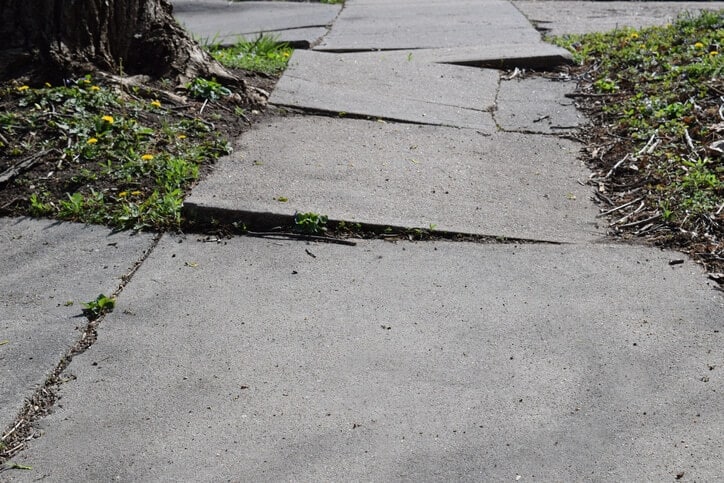Surrounding your inground pool with a concrete deck is a great way to enhance its beauty and functionality. But even a well-made pool deck can sink into the ground over time, causing it to crack, crumble, or break apart entirely.
As local concrete pool deck repair contractors, we see this problem occur on a regular basis here in the Dallas-Fort Worth area. Usually, it can be traced back to one or more of the following causes:
Causes of a sinking concrete pool deck
- Loosely compacted soil: A concrete deck can weigh up to 100,000 pounds, a tremendous load for the ground beneath to bear. Swimming pool installers try to compensate for this fact by compacting the soil beneath the deck. But sometimes they get in a hurry and fail to do a thorough job.
- Changing weather patterns: We all know that it gets really hot in North Texas during the summertime. But cold winters are also fairly common in our region of the country. This yearly shift in temperatures can cause your deck to swell and contract, creating stress fractures that contribute to sinking.
- Erosion: Rainwater can also cause a sinking concrete pool deck, especially if it finds its way into the underlying soil. The risk is especially high after a heavy downpour, but even occasional rainfall can have an erosive effect on your deck.
- Sinkholes: Not all sinkholes are large or easy to see. Smaller ones can form beneath your pool deck, causing it to slope or crack.
A problem you cannot ignore
A sunken pool deck is more than a cosmetic issue. It also poses serious risks to your family’s safety by creating trip or fall hazards. That’s not to mention the impact it can have on your home’s resale value.
The longer you wait to address this hazard, the more you put yourself and your loved ones at risk. The time to act is now.
Concrete pool deck raising
As concrete raising professionals, we’ve restored sunken decks all across the Dallas-Fort Worth area. We begin by injecting an expandable compound into the soil beneath the deck that raises and levels it.
After that, we correct any remaining aesthetic problems such as cracks or fractures. When the job is done, we’ll leave you with a restored pool deck that looks and functions as good as new.
Here at Align Foundation Repair, we’re known and respected throughout North Texas as a leading pool deck repair contractor. Call us today to schedule your free, no-obligation quote. When your deck has you feeling down, we can give it a lift!



